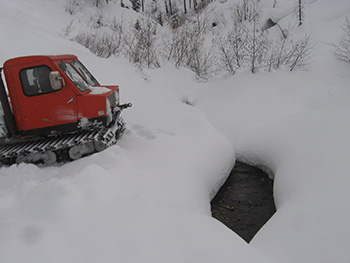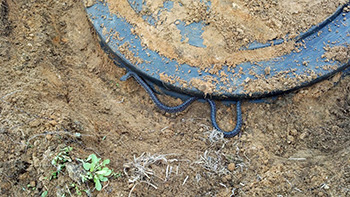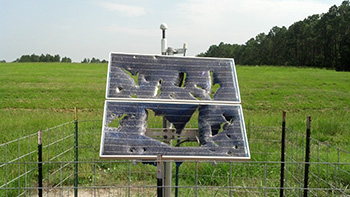C06D
Leavenworth, WA, USA
The USArray component of the NSF-funded EarthScope project ended its observational period in September 2021 and all remaining close-out tasks concluded in March 2022. Hundreds of seismic stations were transferred to other operators and continue to collect scientific observations. This USArray.org website is now in an archival state and will no longer be updated. To learn more about this project and the science it continues to enable, please view publications here: http://usarray.org/researchers/pubs and citations of the Transportable Array network DOI 10.7914/SN/TA.
To further advance geophysics support for the geophysics community, UNAVCO and IRIS are merging. The merged organization will be called EarthScope Consortium. As our science becomes more convergent, there is benefit to examining how we can support research and education as a single organization to conduct and advance cutting-edge geophysics. See our Joining Forces website for more information. The site earthscope.org will soon host the new EarthScope Consortium website.




By Maia ten Brink
“People thought I was telling big tall tales,” says Daniel Knip. “They wouldn’t believe me. Now you’re in New York, now you’re in Niagara Falls, in Quebec, now you’re in Ontario, oh look, now you’re in Florida, now you’re in Alabama. Dean [Lashway] told me to start posting pictures [online] so friends would realize that there are really people who have been everywhere in the US.”

Getting to a snowed-in station by Snowcat. Photo credit: Graylan Vincent
Knip is a service technician for the USArray Transportable Array (TA), an extensive network of seismometers that records ground vibrations from Earth’s surface. After constructing, installing, maintaining, and removing more than 1700 seismic stations deployed every 70 kilometers in a grid across the United States, Knip and the rest of the field crew have logged tens of thousands of hours traveling and have collected a lot of stories. Many of the miles and seismic stations blur together, but a few stick in their memories. Field engineer Bob Pierce can still recall sites he installed a thousand stations ago: “Some of them are unique.”
Traveling the country as a TA field engineer holds little glamor, but it does involve a good dose of adventure. Dean Lashway was a city guy who got his first glimpse of the Milky Way while working on the TA. He was helping Pierce install a site in Colorado, far from the sky-haze of light pollution. But it wasn’t only the galaxies that glowed.
“It got dark and I got surrounded by coyotes,” Lashway recalls. “Bob said, ‘As long as you see the red eyes, it’s ok. It’s when you see the green eyes that you got a problem.’ I was like, ‘Why, what are green eyes?’ He said, ‘Those are the big cats.’
Mike Couch, who worked on the installation team, tells about a legendary black wolf: “Golden eyes, black fur with snow sticking on.” He had driven into a wintry station. “If I’d been hiking, I would’ve been dead.”
Knip once stumbled across a gargantuan rattlesnake hanging above the door in a convenience store in Wyoming. “It was half again as tall as me, and huge, bigger than the size of my thigh.” The snake apparently hailed from Texas, where the taxidermist had stretched it a bit beyond its true size for dramatic effect. “I thought, if I saw one of those out working, I would quit,” says Knip.
The snakes he has met sleeping around the lids of the buried seismic stations usually slink away without bothering him.

A snake next to a Transportable Array vault lid. Photo credit: Dan Knip
“I’ve seen some awfully big spiders—big enough to pay rent if they were in your hotel room. Size of your hand, 10 centimeters or something. Just ugly.”
“I’ve encountered deer, turkeys, tarantulas, scorpions, bears, wolves, and mountain lions,” says Pierce. “But the bugs are the worst. Chiggers, leaving itchy red spots.”
At one site, Knip says, the landowners had domesticated a deer that lived in the woods by their house. When he started petting the family dog, the deer nosed up to him demanding some petting as well.
The true menace, Knip says, are cows, who like to crowd around and rubber-neck while he fiddles with wires in the underground vault that contains the seismic equipment. “You don’t want to be working in a hole in the ground when a 700-kilogram stupid animal walks over and falls down on you.” He once pepper-sprayed a cow to keep it out of his hair. “It worked pretty good.”
“I’ve never been attacked by a cougar or eaten by a bear… I suspect the most dangerous part of the job is driving. Being killed by a semi,” says Knip. “I’ve been up adding extensions to the communication antenna and 110-kilometer-per-hour winds blow my jacket off while I’m hanging from a steel pipe 4.5 meters up in the air. I’ve been at stations that are struck by lightning, so that as you are adding steel pipe mast and the storm is brewing, you can see the lightning strikes.”
Knip once fixed a station that had been hit by a lightning strike so powerful that it melted the solar panel, snaked inside the vault via the wires connecting the buried station to the solar panel, and exploded the plastic in the vault. “Plastic can conduct electricity at one million volts. I didn’t know that.”
“I replaced everything. Everything was broken,” he says. “Lightning is evil. If you had been in the vault, we would have gotten your parents a new child. One million volts coming down? Holy buckets.”
Sometimes human visitors, not animals or foul weather, interrupt the field crew’s work. Knip and his fellow service technician Howard Peavey were so exasperated with teenagers repeatedly throwing rocks at the solar panels powering Station 457A in Yulee, Florida, that they put up a sign asking the kids to desist so they wouldn’t have to keep returning with replacement panels. (It worked.)

Solar panels busted up by teenagers. Photo credit: Dan Knip
Early in the project, installers Pierce and Mike Couch were driving along a forest road in the Umpqua National Forest in Oregon when a man popped out of the trees with a clipboard and demanded to know what they were doing. He wasn’t wearing a ranger’s uniform, however. “He was a conspiracy theorist. Government killed his friend, supposedly,” says Pierce drily. The man camped in a large military tent in the National Forest with a span of mules that he had bought in Canada and was trekking down to Mexico to sell.
Pierce and Couch left him and began work constructing the seismic station when a gunshot blasted between them, luckily missing both. The man was standing at the edge of their clearing. He nodded in greeting and said, “It’s ok, just signaling my wife to get water.”
Pierce sighs. “That was the first real nutjob.”
One landowner, who the field crew affectionately dubbed “Photovoltaic” or “PV” Potts, lived near Mt. St. Helens in an off-the-grid, mostly solar-powered home built out of an old school bus. Don Lippert, who first visited Potts’ property, describes him as a “retired hippie.”
“Ahhh, Mr. Potts… You pulled into the road that went to his place and it looked like the Grateful Dead graveyard for vehicles.” Potts negotiated with Lippert to get two solar panels in exchange for hosting the station. When Doan Nguyen arrived several weeks later to install the station, Lippert says, “old Mr. Potts said, “Hey, I was promised two solar panels.” So Doan said, “Okay, I’ll give you two and that’s it.” But anytime anybody came back to service the station, he was always conning people into some more solar panels.”
“Each of us agreed, expecting the other panels to be collected,” recalls TA manager Bob Busby. When Potts ended up with several solar panels, “that twisted Busby’s knickers,” says Peavey, who fixed the station on Potts’ property a few times.
Some of the field crew ended up connecting with the landowners they met during their travels. Peavey used to keep tabs on a veteran who lived in a tarpaper shack next door to a station in western New Mexico. “He’s one of those displaced Vietnam vets who has not found his way into society again… He lives out there because he can’t deal with civilization, but he has a tiny little television and an antenna. He could get one station out of Albuquerque. He was much more aware of world events than I am,” says Peavey. “Since he was the one watching the station and making sure nobody ran off with any of the important equipment, I made several trips out there. When I was going anyway, I made sure that I had things—food, different sorts of things I thought he may need. He was as close to a subsistence person as I know.” Peavey says he hasn’t returned to visit the veteran since the station was removed several years ago. “I don’t know what became of him.”
If you look at a map showing the entire TA network rolled out across North America, the stations are arranged in rows and columns labeled with letters and numbers. “The top row is the A’s, then the B’s, then the C’s. It starts on the West Coast at one and goes sequentially into the fifties over on the East Coast,” says Knip. “I talk with people about the US in terms of the D row. Right now I am on the Y row. I don’t know what city I’m in without looking at my phone, but I know what row.”
“The stations all blur together,” sighs Knip. “As we slow down, I look back and I wish I’d kept a journal: I went to this city, I went to that city, I did this.”